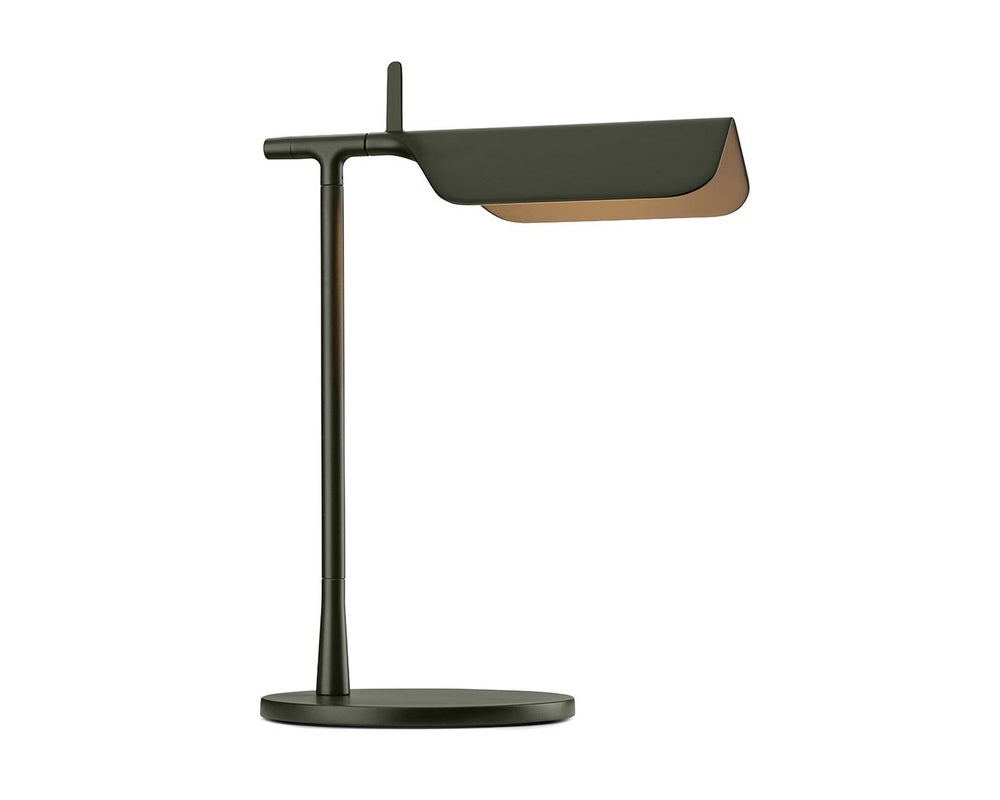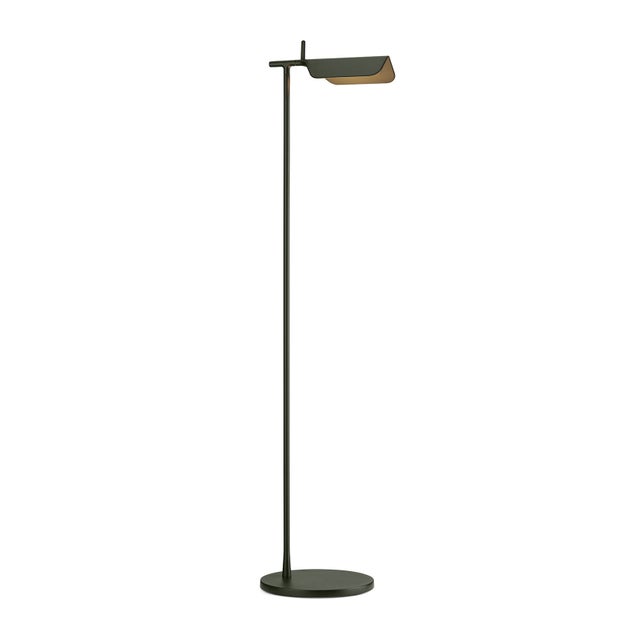Flos Tab LED Table Lamp with Adjustable Head
A brand new edition of the Tab family, now with new capabilities in new colors. This new edition of Tab table lamp has an adjustable head with a ±90-degree rotation capability emitting direct light. Features a dimmer switch on cord.
MEASUREMENTS:
- Height: 12.8 inch
- Depth: 10.7 inch
- Base Diameter: 6.9 inch
MATERIALS:
- Aluminum, PMMA
HELPFUL NOTES:
- Integrated LED
- Environment: Indoor - Dry Location
- Dimmer switch on power cord
- cULus Listed

Edward Barber & Jay Osgerby
UK
Barber, 1969 / Osgerby, 1969
“The pencil is the ultimate tool for the transfer of ideas from mind to paper.” - Edward Barber
Edward Barber and Jay Osgerby, both born in England in 1969, studied architecture and interior design together at the Royal College of Art in London. They founded their own architecture and design studio – Barber Osgerby – in 1996. Known for their roguish designs such as the Tip Ton chair for Vitra and the Tab Light for Flos, the East London-based pair have been showered with a number of prestigious awards including the Jerwood Applied Arts Prize for Furniture, and most recently they were awarded the title of Royal Designers for Industry by the Royal Society of Arts.
Much of Barber and Osgerby’s early work involved the folding and shaping of sheet material, influenced by the white card that they had used frequently in architectural model making. Plywood and perspex were used in the development of the Pilot Table, 1999, and Stencil Screen, 2000.

Founded in Merano in 1962, Flos is internationally recognized as a high-end modern designer lighting and lighting systems manufacturer for private residential and commercial sectors. They strive to amplify and increase creative lighting solutions. Later collaborations include Achille Castiglioni in the 80s, which established FLO within the industry with the Brera Series.
Flos creations have won numerous awards, including the Compasso d'Oro Industrial Design Award five times. Many now feature in permanent collections of major art and design museums worldwide. Commissions include Venice's Palazzo Grassi and the City of Amsterdam archives. With a versatile catalog, long-standing reputation, and rich design history, Flos products are an excellent addition to any space.
This item qualifies for free door-to-door delivery within the Continental USA and Canada, with a few exceptions:
- Orders $180 or less are charged a $35 small order fee at checkout.
- Please contact us for a quote if you are located outside of the Continental USA.
- This is standard curbside delivery; meaning the driver will not haul up an incline or up stairs, and it will be your responsibility to bring the item inside, complete any assembly, and remove packaging debris.
- For a White Glove Delivery quote which includes unpackaging and assembly, please make a note in the Comments section during Checkout and we will get back to you as soon as possible.
For further information on our shipping policies click here.
For further information on returns + refunds click here.








